-
Administrator
Site Admin-

Originally Posted by
johnbb
To make sure that I understand some of what you are saying, "a Hardware firewall", using your terminology, is a router with a firewall software built in. Whereas a "software firewall" is a firewall in the PC.
Well, almost. There are lots of ways to construct a hardware firewall. They don't all have to include a NAT router. But the inverse is true, any common home NAT router will serve as a basic firewall and keep unwanted packets from unexpected sources out of your computers. And yes, a software firewall is firewall software that you run on your PC (The free Kerio firewall is a great software firewall, there are a lot of bad ones out there including ones from some pretty big names). A good software firewall has it's place but it is not safe to only run a software firewall. And yes, I actually do like version 2.15 more than the newer versions. The newer versions do some extra things that are good, but they do a lot of things that I don't want them doing, like checksumming software that never accesses the network. I don't want a software nanny, just a software firewall, so I prefer 2.15. But you're not geting the basic concept of protection from incoming buffer overflows if you trust a software firewall to protect you. Such packets must be kept out of the computer, by the time the software firewall could examine them your system can be compromised. I use both, but if I could only have one it would be a hardware firewall or router, not a software firewall.

Originally Posted by
johnbb
How does one control the built in software in the router ? Does one use an editor either for Windows or Linux or what ?
All home routers that I've used or seen have a web interface and are accessed and configured by putting an IP address into a browser in a computer connected to the router. After a password login (you should always change the default password, and this is absolutely critical on a wireless router), you can configure the router. This ranges from simple things like the type of connection to the ISP and username/password for the ISP if needed, to advanced firewall and routing functions, including forwarding certain ports to certain computers inside you local network (for example, if you want to run a web server you would forward port 80 to the computer that will be running the server software, that will let incoming traffic on that port be routed to the proper computer). You can also usually block certain outbound ports or traffic to certain ip addresses or IP ranges if you wish (for example, I mentioned that I don't want to use IRC or let any software in my systems access IRC, so I created a rule to block port 6667 outbound, the common IRC port. Most routers can block by port, by IP address, by domain name and even by MAC address. Features vary widely between routters. Some, for example can apply rules based on time of day and by individual local computers (great, for example, if you have children and you want to control when their systems have internet access but still give yourself access 24/7). Others have features to track your IP address when your ISP assigns you a changing "dynamic IP". Some support secure incoming connections or Virtual Private Networks (VPN). The list of features is huge. My best advice is to find some routers that are sold in your area and look up the manuals on-line (most are available in PDF form on the manufacturer's websites). Read through several to get a feel for how they work and what differences you see.

Originally Posted by
johnbb
As you say there are problems with some routers and their firewalls, could you recommend a router with it's own firewall that you feel is good ? I would prefer a wireless router with a printer socket if possible.
Sure, there are problems with some hardware. Netgear is the one that had some models that had the "secret" back door in them. It was actually the factory in China that made the back door (and used their own phone number as the master password), so if they make routers for other brands they may have been affected also. Word is that Netgear didn't fix it either, they just changed the login information, and hackers know the new login. D-link has has some with buffer overflow security problems. Some routers just don't work as well as others, some may not have a feature that you think you want or need. Some keep better logs, and so on. All, as far as I know, do basic Network Address Translation and this will serve to keep packets out. In addition many try to look for known problems in packets and keep them out of your system. even when they come from a outside computer that you inniated the connection to.
I don't have much use for a printer port on a router. I put the printer on the computer and then share it with the other computers on my network. If you want them you can get print servers, even wireless ones, that allow you to locate a printer away from the router. And some printers now come with their own network print server in them, a design that I like a lot more that trying to use a print server built into a router. So I can't recommend a router with an embedded print server, but you'll certainly come across information about these while you shop and compare models.
I don't know that I can make a good recommendation for you either. One issue is that often the same router sold in different countries will have different firmware and different feature. And it's very hard to evaluate what features a stranger needs. Most new users that I have to convince to use a router consider cost a overwelming issue. In these cases I suggest they look for special sales and if the find an extremely low cost model (which I often find here), they look at it's features, read it's manual, and determine if it's right for them. If you get your first router cheap enough it doesn't have to do much more than protect you with the NAT firewall to be useful, and the experience can be a big help in knowing how to evaluate other routers if you want to step up. If your main concern isn't cost then there is a Linksys Wiress that is particularly interesting, the WRT54GL, that opens the door to all kinds of magic: it runs Linux and the good hacker community has come up with all sorts of enhancements for it. Follow the links and then do searching on Google, there is plenty more. If I had to recommend one router it would be this. But I don't have one myself, I don't need it and really don't have the time to do a lot of work with it that would justify getting it.

Originally Posted by
johnbb
Referring to the PPPoE in the Knoppix CD from the "Moving to Linux" book, as far as I can find, ALL the PPPoE tools given require dialing steps, whereas as I have said I do not need this.
All I can say here is that I've never used PPPoE with dial-up and I have used it with Knoppix on an ADSL connection, no dialing involved. I did the PPPoE connection only as a test to answer some questions a friend had. It worked. But as I say, I just don't trust putting a computer naked on the Internet without a NAT firewall. In this case I was about to install Debian, so I ran my tests with Knoppix and PPPoE, got my frend his answers, then before attaching that computer to the rest of my network, I wipped it's hard disk and got ready to install Debian (I then hooked back up to my router and did a Debian net-install). Yes, this was likely over cautious, particularly since I went on-line with Knoppix, not Windows, but my point is that I would not have done it even with Knoppix if I wasn't about to erase the computer anyway. That's why I am not doing it again to walk you through the steps that I took. But it's there.
-
Junior Member
registered user
Inability to connect to the Internet
To Harry,
Thank you for your very detailed explanation or routers. I have made a printed copy for reference IF I get round to buying one again.
I should add that I bought one about 3 months ago, and did not find it of any help whatsoever. In fact I found it a bit of a hindrance, so much so that I no longer use it. However, in the light of your detailed explanation, I may get around to trying it out again.
=====================================
To others
All this talk of routers appears to me to detract from the initial direction of this thread, namely how to connect to the Internet using Linux, when all the connecting tools appear to require dialing-up a connection, when in my case, and others too, we don't need to dial anything, as all we need in Windows XP is, an ID and a password. No modem either just a connection into the computer's "network" socket from the cable provider.
This may or may not be new technology, but surely there is someone who could give authorititive advise without the need for routers and the like.
-
Administrator
Site Admin-
Re: Inability to connect to the Internet

Originally Posted by
johnbb
.. but surely there is someone who could give authorititive advise without the need for routers and the like.
Maybe your system is so new that Knoppix doesn't support it, although I rather doubt that. I think it's more likely that Rusty and I tried to point you in the proper direction but that you hit another problem and abandoned that approach.
-
Senior Member
registered user
Re: Inability to connect to the Internet

Originally Posted by
johnbb
All this talk of routers appears to me to detract from the initial direction of this thread, namely how to connect to the Internet using Linux, when all the connecting tools appear to require dialing-up a connection, when in my case, and others too, we don't need to dial anything, as all we need in Windows XP is, an ID and a password. No modem either just a connection into the computer's "network" socket from the cable provider.
This may or may not be new technology, but surely there is someone who could give authorititive advise without the need for routers and the like.
Basically what your cableco has done has moved the typical cable modem to some box thats probably on the side of your dwelling or may even be inside a equipment cabinent someplace. They then run you an Cat 5 cable to plug into the network card of your PC. This is rather unique to use PPPoE on a cable based plant, but since its outside the US, thats probably not that unusual. If your video service comes this way to then its probably some form of IPTV.
PPPoE be it under Linux or Winvirus is still dialing. Thats part of PPPoE. Winvirus just is doing a better job of hiding it from you. If you ran an install CD or on the intial setup it asked for user name and password at some point. Thats now stored in the PC setup for that connectoid. PPP of the PPPoE is Point to Point Protocol or PPP its whats used on all those dialup modems. You can have something called SLIP or Serial Line Interface Protocol, PPP became the defacto standard for most connections unless you really needed SLIP for some reason. You can also have another ancient technology called UUCP or Unix to Unix Copy Protocol. For years before the internet boom UUCP was the way most got their email and NNTP (news) from a ISP or mostly university/colleges. PPPoE is just doing PPP Over Eterhnet, thus the oE. You can also have PPPoA which is PPP OVER ATM. The point of this is that PPP = DIALING in some manner some how some way. This link has some good info to understand PPP http://en.wikipedia.org/wiki/Point-to-Point_Protocol and for SLIP http://en.wikipedia.org/wiki/Serial_...ernet_Protocol
Thats why under winvirus XP you enter a user name and password, thats what its for to connect= dialing.
In Linux you are going to have to go through the dialing steps to get the PPPoE connection established so that you can get an IP etc. on the ISP's network. Till you "connect" to the ISP you really don't have a connection to the internet, but only to the ISP. The PPPoE script is there to set up what it needs to talk to the internet. It may not be dialing in the traditional sense of dialing a phone number, but its still dialing.
A router would probably solve this problem instantly as there is some incomptability between the PPPoE stack in Linux and your ISP's, or some obscure setting that is not getting set by Linux that winvirus is setting. The router would create the PPPoE connection from your ISP to the router, then you feed the PLAIN JANE Ethernet out to Linux. Zero issues with plain jane ethernet and Linux.
If you have another computer and a HUB (NOT A SWTICH) a HUB. Take the hub plug the cable from the cableco into the uplink port of the hub, plug one computer into another port, plug you winvirus xp computer into another (COMPUTER OFF). Turn on the spare computer if it doesn't have it install ethereal so you can snoop on the winvirus computer you normally use to connect to the internet. With capture on turn on the winvirus computer and connect to the internet. Then post the log of ethereal here. Something in there may show some setting that the normal PPPoE setup is missing and can be corrected.
Far simpler would be a router which would solve the issue, instantly. Also its a more secure connection. I insist on a router for any system I troubleshoot. No router, I don't work on it till you install it or I install one. Doens't matter Linux, Winvirus, mcrap, AS/400, router. No its not to make money, router is at cost to them and installed free. With out it troubleshooting some issues is just asking for more trouble.
-
Administrator
Site Admin-
Re: Inability to connect to the Internet

Originally Posted by
rec9140
PPPoE be it under Linux or Winvirus is still dialing.
What are you talking about? I've used PPPoE in Knoppix, the same setup that Rusty gave the exact menu location for. It goes out and finds the PPPoE connection just fine. It requires the username and password, It does not require a phone number or any dialing; my DSL is always on and no dialing is needed. There is no dialing. There is no dial-tone. There is no modem in my computer, only an ethernet card (which connects to a DSL box loosely called a modem that then connects to the DSL line coming in. PPPoE under Linux and Knoppix does not need to involve dialing.
I have only used PPPoE as a test and wiped the hard disk after it, I normally always use a router (which does the PPPoE itself, again without being told any phone number to dial, only username and password when connecting) for my connections, but PPPoE does work without dialing, I just advise strongly against using it.
---
Verifying of md5 checksum and burning a CD at slow speed are important.
-
Junior Member
registered user
Inability to connect to the Internet
To rec9140,
Thank YOU.
However, I'll need to digest your advise and information SLOWLY. I ain't so young as I used to be. It seems that we have got back to routers again though.
Have you also looked at the "ifconfig" results I posted earlier ?
Could you perhaps explain the jargon there in plain English ? Currently it is gibberish to me in it's current form.
I do happen to have another laptop, namely my old computer, to try out your suggestions, but...... what is a "HUB" ? I'm new at this don't forget.
Why though is the Windows XP connection tool called "Winvirus" ? It would lead one to believe that it was an anti-virus tool with a name like that.
Thank you though, for another point of view that at least sounds authoritative, confirming Harry's opinion on routers too.
You certainly seem to have disturbed "Harry" I see. I had not better get involved here. I think it better I sit it out on the side and watch you two "experts".
Regards
=============
To Harry,
You said:
"I've used PPPoE in Knoppix, the same setup that Rusty gave the exact menu location for. It goes out and finds the PPPoE connection just fine. It requires the username and password, It does not require a phone number or any dialing; my DSL is always on and no dialing is needed. There is no dialing."
Here I think you have not noted that my version of Knoppix DOES include the dialing step and phone number requirement in connecting. I think we have different versions. I've always assumed that this dialing step, because I have no number to enter, has been the stumbling block.
Where did you get your version ? Perhaps I could download the same version to try out to see if there is any change, if you could let me know the source.
Mine came, as I previously said, from the "Moving to Linux" book by Marcel Gagne. All the connection tools in this version have the "dial-up" step needing a phone number.
Please don't assume that your advise on routers has been ignored. It has not, and if I can find a place locally to get a router that meets your ideas on specs, I will get a new one. The one I already bought some time ago, does not seem to meet the specs that you advocate. In the mean time, would l like to endeavour to get connected without one as a first step, to prove a point if nothing else.
Regards
-
Senior Member
registered user
Re: Inability to connect to the Internet

Originally Posted by
Harry Kuhman

Originally Posted by
rec9140
PPPoE be it under Linux or Winvirus is still dialing.
What are you talking about? I've used PPPoE in Knoppix, the same setup that Rusty gave the exact menu location for. It goes out and finds the PPPoE connection just fine. It requires the username and password, It does not require a phone number or any dialing; my DSL is always on and no dialing is needed. There is no dialing. There is no dial-tone. There is no modem in my computer, only an ethernet card (which connects to a DSL box loosely called a modem that then connects to the DSL line coming in. PPPoE under Linux and Knoppix does not need to involve dialing.
.
You and the oringal poster are confusing dialing with POTS and dialing numbers.
PPP as I posted still dials .. ....
NO it does not dial a phone number
NO there is not a dial tone.
NO modem involved.
Again, your taking the traditional route of "dialing" to task.
Step back and think outside the constraints of the standard definition of dialing, use connect if that works better.
PPPoE is a way for ISP's to oversell their network as its not always on, unelss you get a router, which every time the session times out it reconnects. Which they probably are trying to prevent by saying it you need winvurs XP to connect, and not compatible with routers or Linux or mcrapx.
PPPoE has to connect for each session (routers will time out, just they reconnect automatically), and the session is very similar to a dial up, just uses Ethernet as the transport versus V.90/92 and a POTS line.
-
Junior Member
registered user
Inability to connect to the Internet
Reading other threads on this same subject, and gleaning "How to" on my current Windows XP connection to my IP, below are the details for you, to interpret. That is if it is of any help solving this 'connection' problem in Linux.
My previous "ifconfig" results I have posted earlier in this thread.
Regards to you both.
Microsoft Windows XP [Version 5.1.2600]
(C) Copyright 1985-2001 Microsoft Corp.
C:\Documents and Settings\Administrator>ipconfig
Windows IP Configuration
Ethernet adapter Local Area Connection:
Connection-specific DNS Suffix . :
Autoconfiguration IP Address. . . : 169.254.115.35
Subnet Mask . . . . . . . . . . . : 255.255.0.0
Default Gateway . . . . . . . . . :
PPP adapter netvigator:
Connection-specific DNS Suffix . :
IP Address. . . . . . . . . . . . : 219.79.83.158
Subnet Mask . . . . . . . . . . . : 255.255.255.255
Default Gateway . . . . . . . . . : 219.79.83.158
[/quote]
-
Administrator
Site Admin-
Re: Inability to connect to the Internet

Originally Posted by
johnbb
Here I think you have not noted that my version of Knoppix DOES include the dialing step and phone number requirement in connecting. I think we have different versions. I've always assumed that this dialing step, because I have no number to enter, has been the stumbling block.
There are 2 different discussions going on about this issue, you might want to read this thread also. But as to your above statement, in this thread and not the other Rusty point you to exactly the pppoe setup in Knoppix, it does not use dialing, You responded to him:

Originally Posted by
johnbb
Yes, I've tried that with the result that it says the connection has been triggered.
However, using either browser supplied, there is no Internet connection....
and then you dropped it and have been insisting that pppoe needs dialing, which it does not. Read the other thread for an idea of what may be going on.
-
Senior Member
registered user
Re: Inability to connect to the Internet

Originally Posted by
johnbb
However, I'll need to digest your advise and information SLOWLY. I ain't so young as I used to be. It seems that we have got back to routers again though.
A router will solve the issue. There seems to be a resistance to them for some reason. A simple inexpensive even in HK, device will solve your issue and let you connect via Knoppix or probably any other Linux.
Just as a test, pick another current live Linux CD and downaload it like Kubuntu or PCLinuxOS Big Daddy, try to set them up for the PPPoE connection see what happens and posts.

Originally Posted by
johnbb
Have you also looked at the "ifconfig" results I posted earlier ?
Yes.

Originally Posted by
johnbb
Could you perhaps explain the jargon there in plain English ? Currently it is gibberish to me in it's current form.
I do happen to have another laptop, namely my old computer, to try out your suggestions, but...... what is a "HUB" ? I'm new at this don't forget.
This is a very advanced troubleshooting method.......
A hub is a way you connect computers to a network, you need one of these over a similar device called a switch. The reasons are beyond this discussion, but hubs and switches work different and to "snoop" on the network you need a hub.
http://www.directron.com/vis8por10hub.html Thats an example...... Being in HK go to your local computer "row" and tell them you need a network HUB, you will need to be persistent as they will try to sell you a switch. Be sure you get a HUB.
Network Cable in from your ISP (The one you plug into the PC now) ======== to Hub Uplink port (VERY IMPORTANT)======== plug laptop into another port any port on the hub=========plug the XP PC into another port on the hub. You will have 3 wires plugged into the hub now.
Either install on the laptop a copy of etherreal or use a disc like Knoppix and run it from the CD.
You want to capture the packets that the XP sends out to see what its doing. Setup ethereal see: http://www.ethereal.com/faq.html
Once you have the log you can post it and possibly there will be something that triggers a way to find out what the issue with your ISP.
A router for the cost of the switch would solve this whole problem and not require more of time investment.

Originally Posted by
johnbb
Why though is the Windows XP connection tool called "Winvirus" ? It would lead one to believe that it was an anti-virus tool with a name like that.
Winvirus is my name for windows. Its nothing but a virus that infects systems from the start. I am getting rid of it from my systems. I no longer install it to the systems I build. Spyware/virus infected are wiped clean and Linux installed or bare drive. I am just tired of the same nonsense over and over on a daily basis with it. I use Linux 99% for work. I have one winvirus based program that still is required. Its days are numbered due to a change to a different system for this program.
Similar Threads
-
By Joey6 in forum Networking
Replies: 4
Last Post: 01-17-2007, 01:20 AM
-
By jacksonon in forum Networking
Replies: 6
Last Post: 09-13-2006, 09:27 PM
-
By solbergg in forum Networking
Replies: 4
Last Post: 03-10-2006, 03:11 AM
-
By simplyskate in forum Networking
Replies: 10
Last Post: 04-28-2005, 06:45 PM
-
By THiM in forum Hardware & Booting
Replies: 5
Last Post: 05-19-2003, 07:27 PM
 Posting Permissions
Posting Permissions
- You may not post new threads
- You may not post replies
- You may not post attachments
- You may not edit your posts
-
Forum Rules

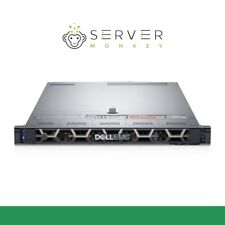
Dell Poweredge R640 Server | 2x Silver 4114 20 Cores | 192GB | 8x HDD Trays
$1939.99

Dell Poweredge R640 Server | 2x Silver 4114 20 Cores | 64GB | 8x HDD Trays
$1614.99
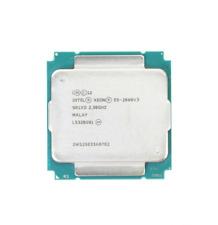
Intel XEON E5-2699 V3 CPU PROCESSOR 18 CORE 2.30GHZ 45MB L3 CACHE 145W SR1XD
$45.00
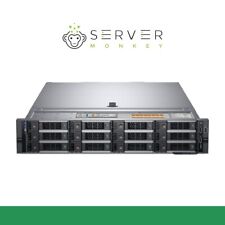
Dell PowerEdge R740XD Server | 2x Gold 6140 36 Cores | H730 | Choose RAM/ Drives
$2800.00
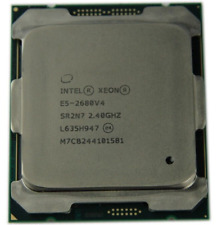
Intel Xeon E5-2680 v4 2.4GHz 35MB 14-Core 120W LGA2011-3 SR2N7
$17.99
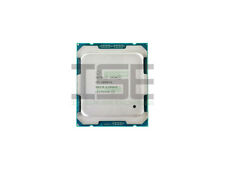
Intel Xeon E5-2699v4 SR2JS 2.2GHz 22-Core 55MB 145W Server Processor CPU
$144.95
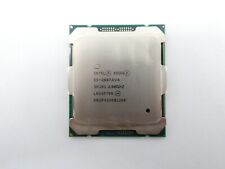
Intel Xeon E5-2697A V4 2.6GHz CPU Processor 16-Core Socket LGA2011 SR2K1
$39.99
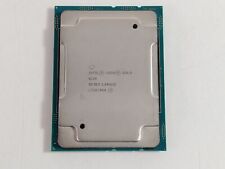
Intel Xeon Gold 6126 2.6 GHz LGA 3647 Server CPU Processor SR3B3
$17.99

HP Workstation Z640 2x Xeon E5-2623V4 32GB Ram Dual 256GB SSD K420 Linux GA
$234.98

Dell Precision Tower 7810 Desktop Xeon E5-2623 v4 2.60Ghz 16GB RAM NO HDD NO OS
$100.00



 Reply With Quote
Reply With Quote









